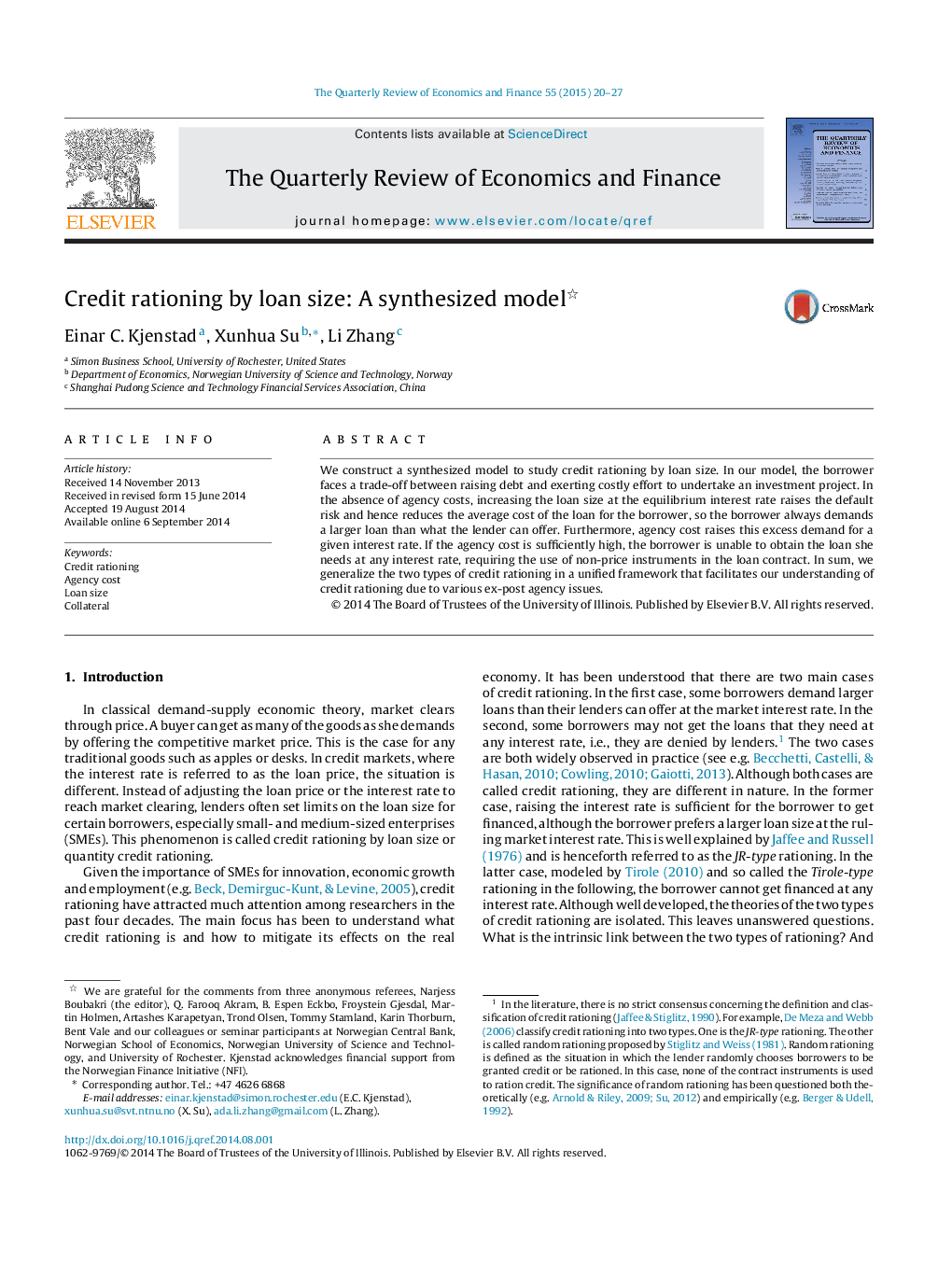| Article ID | Journal | Published Year | Pages | File Type |
|---|---|---|---|---|
| 982147 | The Quarterly Review of Economics and Finance | 2015 | 8 Pages |
•A synthesized model of credit rationing by the loan size.•Illustrate credit rationing due to various agency problems, including costly state verification, money diversion, risk-shifting and hidden shirking.•Link credit rationing in the sense of Jaffee and Russell (1976) and Tirole (2010).
We construct a synthesized model to study credit rationing by loan size. In our model, the borrower faces a trade-off between raising debt and exerting costly effort to undertake an investment project. In the absence of agency costs, increasing the loan size at the equilibrium interest rate raises the default risk and hence reduces the average cost of the loan for the borrower, so the borrower always demands a larger loan than what the lender can offer. Furthermore, agency cost raises this excess demand for a given interest rate. If the agency cost is sufficiently high, the borrower is unable to obtain the loan she needs at any interest rate, requiring the use of non-price instruments in the loan contract. In sum, we generalize the two types of credit rationing in a unified framework that facilitates our understanding of credit rationing due to various ex-post agency issues.
